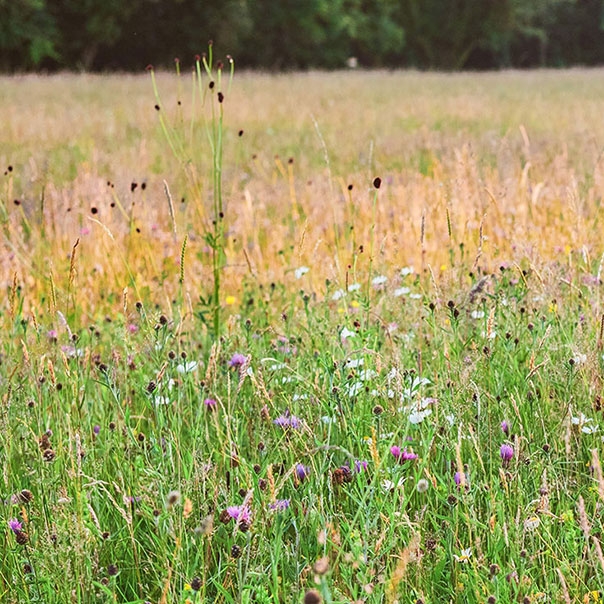A guide to our available plants
The plants below are those we are growing in the polytunnel at the moment. These may change during the year so please check back to see any updates.
Please note: our minimum order is 126 plugs (one tray), with a minimum of 42 plugs per species.
Betony
Betonica officinalis
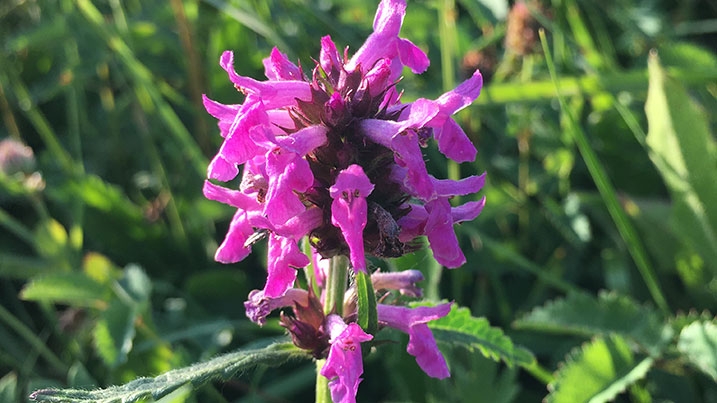
Perennial, bushy plant with spikes of purple flowers – attractive to bees and butterflies.
Conditions: Will grow in a wide variety of conditions. Likes slightly damp well drained conditions but can cope with heavy soils and partial shade and will also tolerate full sun. Likes ericaceous soils.
Flowers: June – August
Height: up to 60cm
Also known as: Bishops’s Wort, Wood Betony, Common Hedge nettle
Birds foot trefoil
Lotus corniculatus
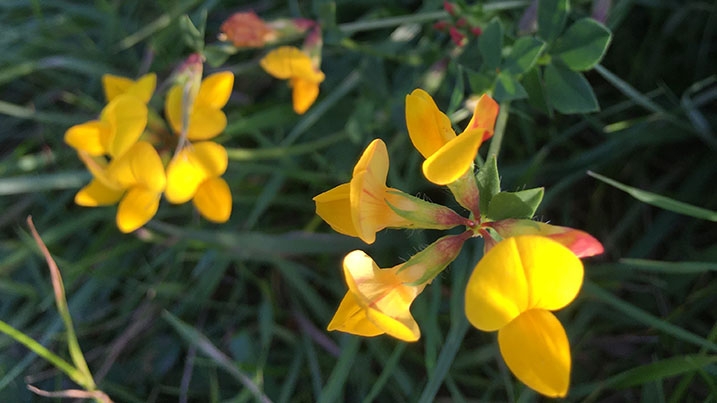
Perennial, creeping plant with clusters of bright yellow flowers often with a tinge of red. Seed pods look like a bird’s foot. A food plant for the caterpillars of the Common Blue, other Blues and Clouded Yellow butterfly and Burnet Moth amongst others as well as an excellent nectar plant for bees.
Conditions: Likes well drained soils in full sun but will tolerate a variety of conditions.
Flowers: May to August/September
Height: 10 - 40 cm
Also known as: Eggs and Bacon, Cheesecake Grass, Lamb’s Toes
Black knapweed
Centaurea nigra
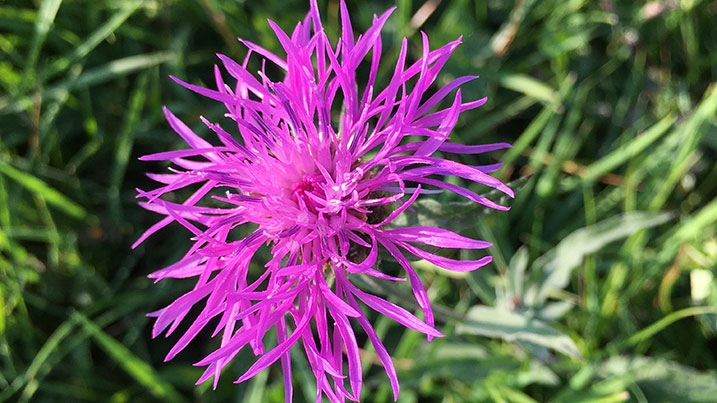
Hardy, perennial with red/ purple, thistle like flowers. A good nectar source for many butterflies such as Brimstone, Small Tortoiseshell, Peacock, Comma and Meadow Brown amongst others. Attractive to Goldfinches.
Conditions: Moist but well drained soils in full sun or partial shade, can tolerate dry conditions.
Flowers: June - September
Height: 40 – 70cm
Also known as: Common Knapweed or Lesser Knapweed, Bell Weed, Hardhead, Tassel
Corky-fruited water-dropwort
Oenanthe pimpinelloides
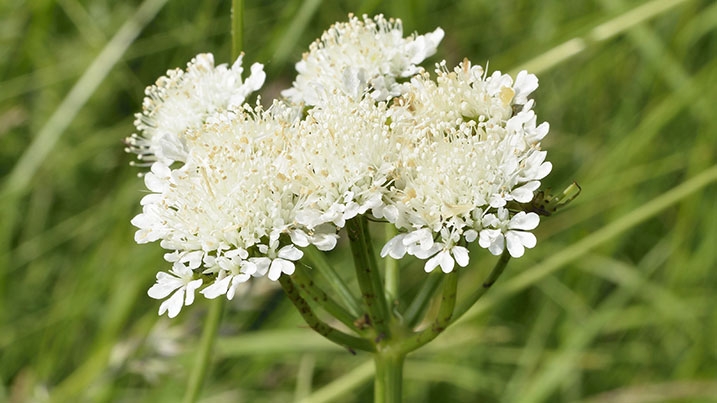
Perennial with solid ridged stems and small white/pink flowers in clusters. Fruits have ‘corky’ bases. Poisonous if eaten and to livestock
Conditions: Like damp ground like wetlands, and river banks, but can tolerate dry conditions
Flowers: June - August
Height: Up to 2m
Also known as: Meadow parsley, Rough water-dropwort
Cowslip
Primula veris
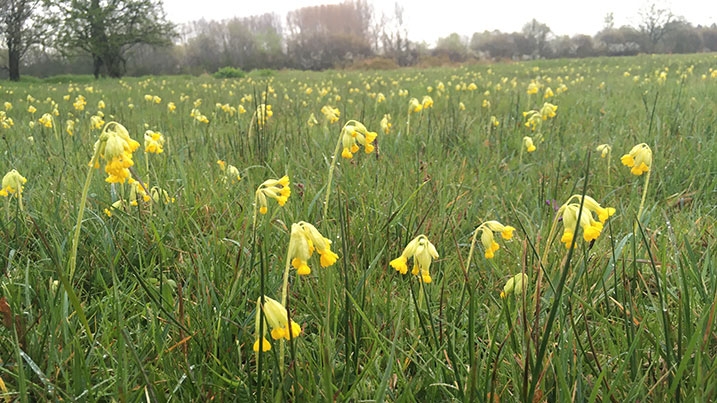
Perennial spring flower with deep yellow tubular drooping flowers and a rosette of leaves. Good early nectar plant for butterflies and bees. They are the food source for Duke of Burgundy caterpillar.
Conditions: Likes heavy soils and semi shade to full sun, will also grow well on chalky soils and open conditions. Grow best when not overshadowed by other plants.
Flowers: April to May
Height: 15 - 30 cm
Also known as: Fairy Cup, Key Flower, Luck Flower, Paggles
Devil's-bit scabious
Succisa pratensis
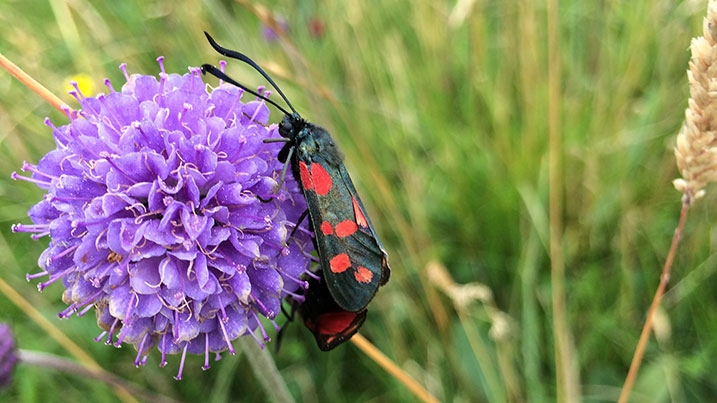
Tall, hardy perennial with blue to pink/purple flowers. Attractive to bees and butterflies - a key food plant of the Marsh Fritillary butterfly.
Conditions: Likes damp, fertile conditions in sun or partial shade. Likes ericaceous soils.
Flowers: June – October
Height: 15 – 80cm
Also known as: Blue Bonnets, Bobby Bright Buttons
Dyer's greenweed
Genista tinctoria
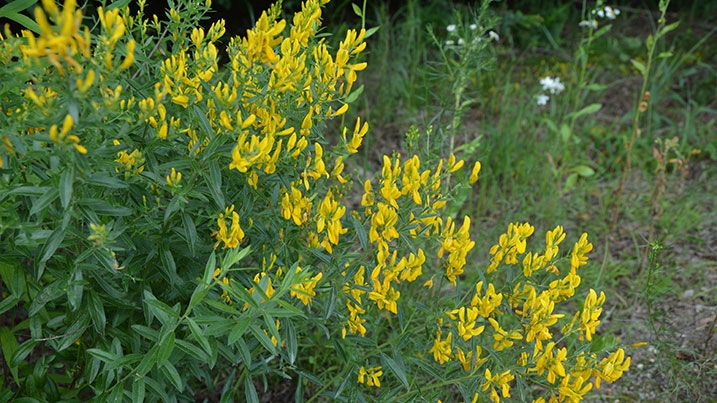
Generally a low growing shrubby plant with clusters of yellow flowers. Historically was used as a yellow dye
Conditions: Likes well drained relatively poor soil in full sun
Flowers: June – August
Height: up to 90cm
Also known as: Dyer’s broom, Dyer’s whin, Waxen woad
Field scabious
Knautia arvensis
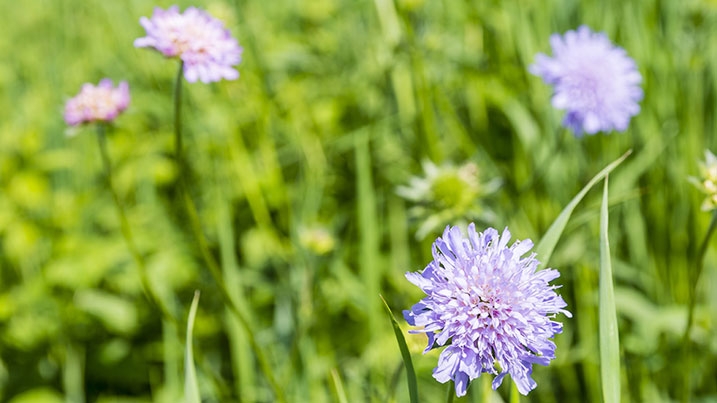
Tall, perennial with pale blue to purple/mauve flowers. Good plant for butterflies the nector source for small skipper and small tortoise shell butterflies. Caterpillar food for Marsh Fritillary Butterfly and Narrow-bordered Bee Hawk-Moth. Birds will also eat their seeds.
Conditions: Tolerant of a wide range of conditions but likes well drained soil in full sun.
Flowers: June - September
Height: 30 – 90cm
Also known as: Black Soap, Egyptian Rose, Lady’s Cushion
Goat's beard
Tragopogon pratensis
Available Autumn 2024
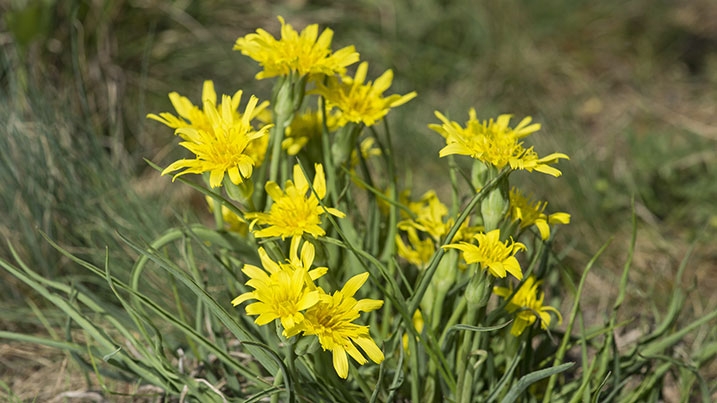
Annual/short lived perennial with bright yellow dandelion like flowers which close at midday. They have large dandelion like ‘clock’ seed heads. Self seeds easily. Good for bees and butterflies
Conditions: Can tolerate a variety of conditions from moist poorly drained to dry well drained in full sun or partial shade
Flowers: June – August
Height: 30cm - 1m
Also known as: Jack-go-to-bed-at-noon, Meadow salsify, Showy goat’s-beard
Greater bird's-foot trefoil
Lotus pedunculatus
Available Autumn 2024
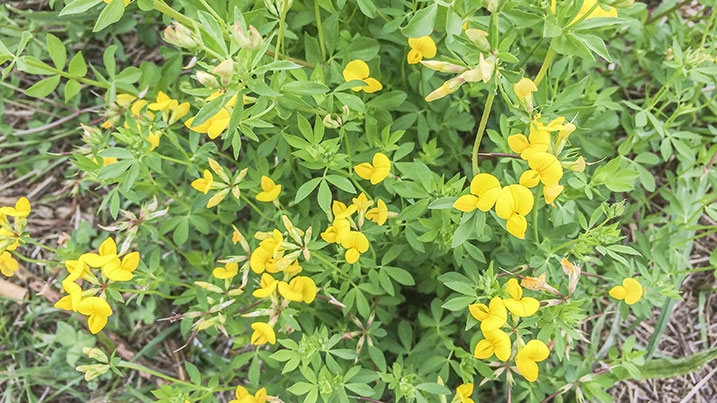
Hardy, perennial with yellow flowers, larger than Bird’s foot trefoil.Good nectar source for Butterflies, moths and bees
Conditions: Likes damp or wet conditions in full sun
Flowers: June – September
Height: 30 - 50cm
Also known as: Marsh bird’s-foot trefoil
Great Burnet
Sanguisorba officinalis
Low stock available

Tall perennial with elongated deep red/burgundy flowers on tall stems a good source of nectar for bees and hoverflies.
Conditions: Likes damp but well drained soils that don’t dry out, will tolerate full sun and partial shade.
Flowers: June - September
Height: 30cm – 1m
Also known as: Burnet Bloodwort, Greater Burnet
Lady's bedstraw
Galium verum
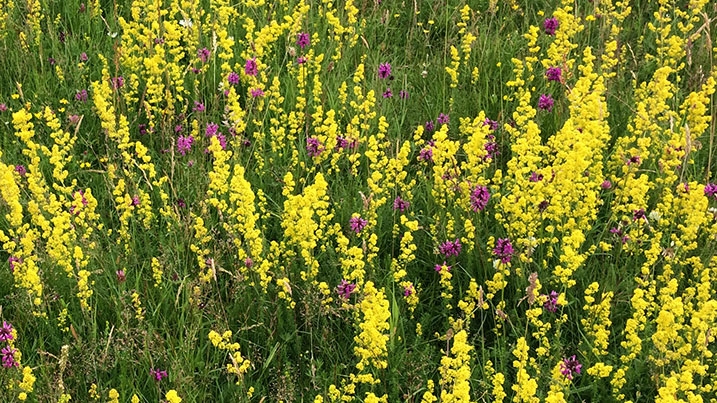
Perennial with clusters of small yellow flowers with a honey like scent. It was traditionally used to stuff mattresses and the hay like smell of the dried leaves was said to help repel fleas. It was also used to curdle milk for cheese making and as a dye and was used to give Double Gloucester cheese its distinctive colour. Good for bees and butterflies and food for the caterpillar of the hummingbird hawk-moth.
Conditions: Likes poor, well drained to moist soils in full sun or partial shade. Does not need much watering once established. Does not like very acid soils.
Flowers: June - September
Height: Up to 50cm
Also known as: Yellow bedstraw, Bed flower, Cheese rennet, Maidens hair
Meadow sweet
Filipendula ulmaria
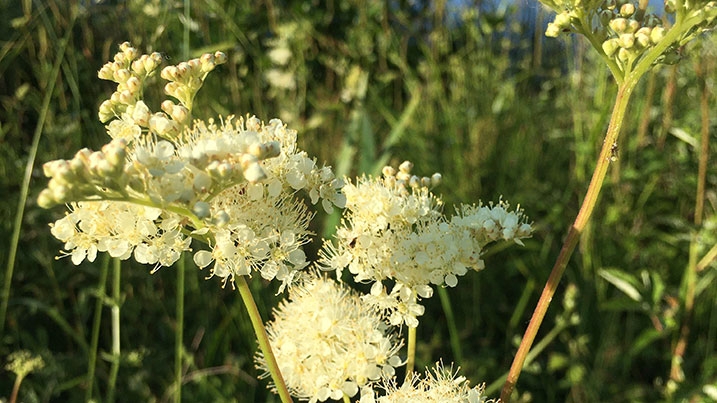
Tall, bushy perennial with sweet scented fluffy white/cream flowers. A good late nectar source for butterflies, bees and other polinators. Seeds provide food for birds. The sap contains a chemical simpler to aspirin and in medieval times was used for pain relief.
Conditions: Will grow in full sun or partial shade on damp or wet soils, well or poorly drained.
Flowers: June - September
Height: 60 – 130cm
Also known as: Bridewort, Honey-Sweet, Meadow Queen
Meadow vetchling
Lathyrus pratensis
Available Autumn 2024
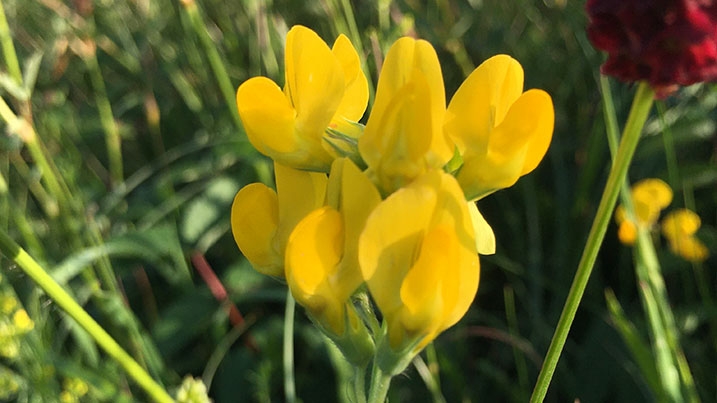
Hardy perennial scrambling plant with bright yellow flowers followed by shiny black seed pods. Excellent bee and butterfly plant.
Conditions: Likes moist but well drained soils and full sun or partial shade.
Flowers: May - August
Height: 50cm to 1m
Also known as: Angle Berries, Lady’s Fingers, Meadow Pea
Ragged robin
Silene flos-cucculi
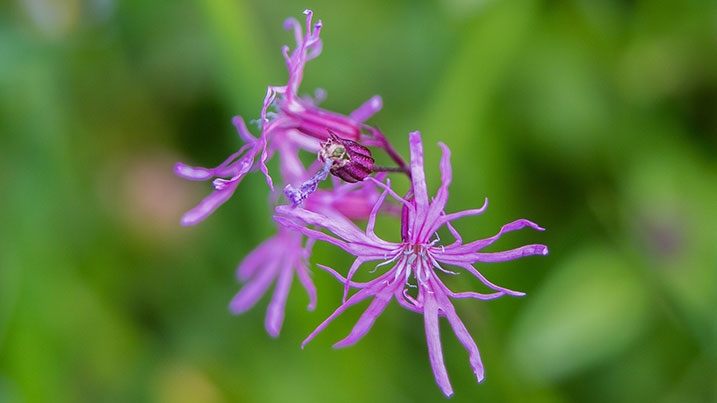
Perennial plant with pink feathery ‘ragged’ flowers attractive to bees and butterflies, seed heads are a good food source for birds.
Conditions: likes sun or partial shade and damp/wet soils.
Flowers: May - July
Height: 30 - 90cm
Also known as: Crow flower, Crow soap
Rough hawkbit
Leontodon hispidus
Available Autumn 2024
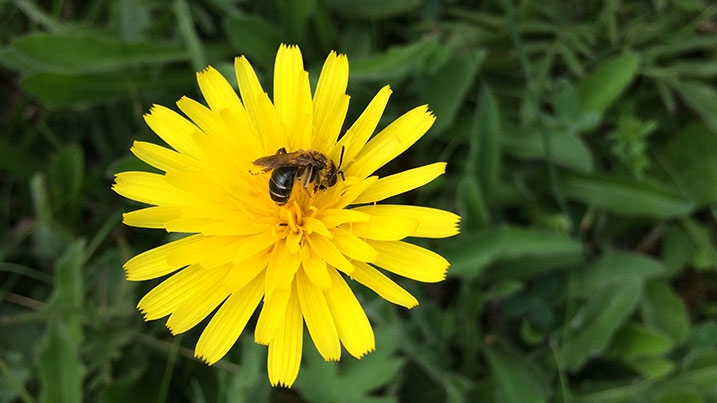
Perennial with a hairy stem and yellow dandelion like flowers with red/orange outer florets. attractive to bees and butterflies Seed heads are attractive to birds.
Conditions: Likes dry or well drained sandy soils in full sun.
Flowers: June – October
Height: 10 - 40cm
Also known as: Greater Hawkbit
Saw-wort
Serratula tinctoria
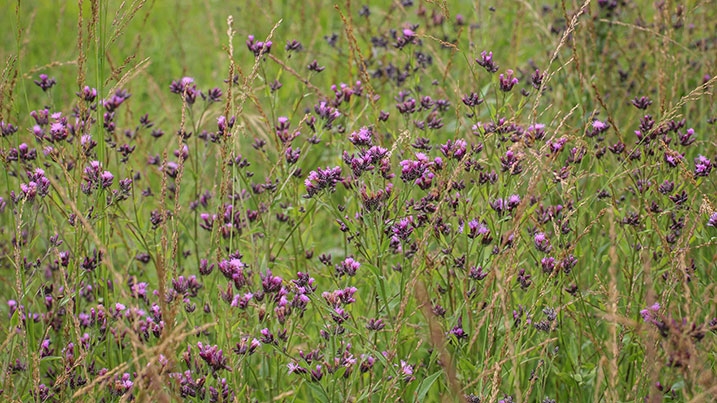
Perennial with Violet/red flowers similar to knapweed. This plant is named after its serrated leaves. Its leaves were previously used to make a yellow dye.
Conditions: Damp moist, calcareous soils, full sun or partial shade
Flowers: July - September
Height: 70 - 120cm
Also known as: Dyer's plumeless saw-wort
Sneezewort
Achillea ptarmica
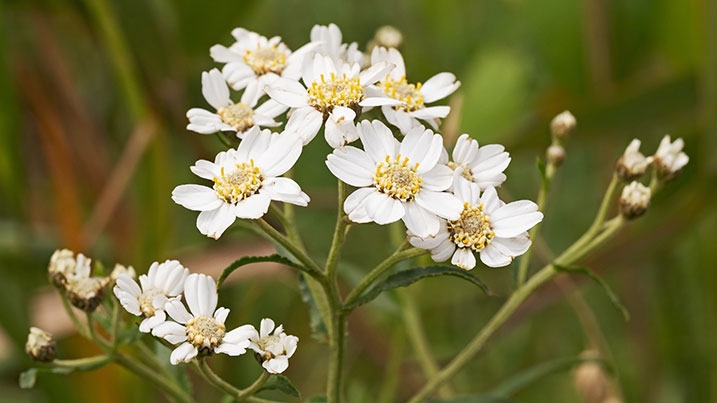
Hardy perennial with clusters of small white flowers which attract insects. Said to cause sneezing when root is crushed!
Conditions: Likes damp and well drained soils in partial shade but will tolerate a variety of conditions, doesn’t like full shade.
Flowers: July to September
Height: 25 - 50cm
Also known as: Ball Of Snow, Goosetongue, Seven Years’ Love
Tufted vetch
Vicia cracca
Available Autumn 2024
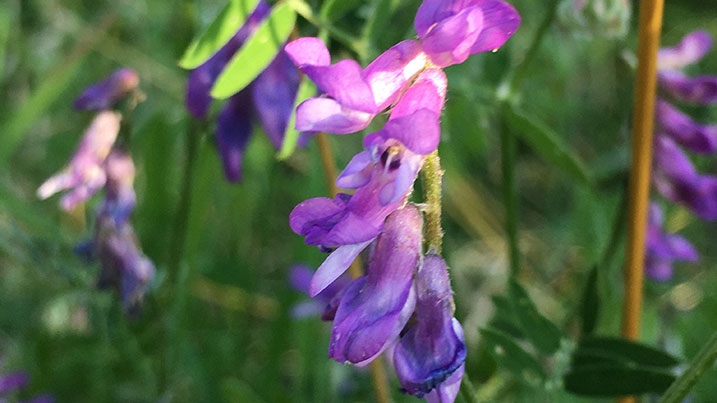
Scrambling perennial with lots of blue to violet flowers, seed pods turn black when ripe. Attractive to bumble bees, butterflies and moths, important food plant for breeding butterflies such as the Wood White and Short-tailed blue.
Conditions: Likes damp well drained soils but can tolerate a range of conditions prefers full sun but can grow in partial shade
Flowers: June - September
Height: 60 - 150cm
Also known as: Cow vetch, Bird vetch, Canada pea, Tine grass
If you would like to place an order, please get in touch to check availability and discuss.
Get in touch

This project has been kindly supported by Eversheds Sutherland and the Moto Foundation.
